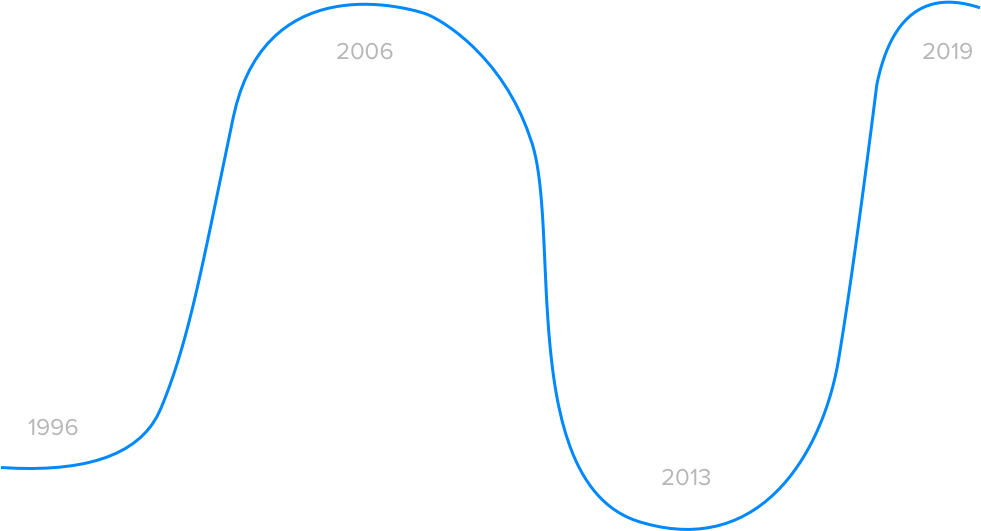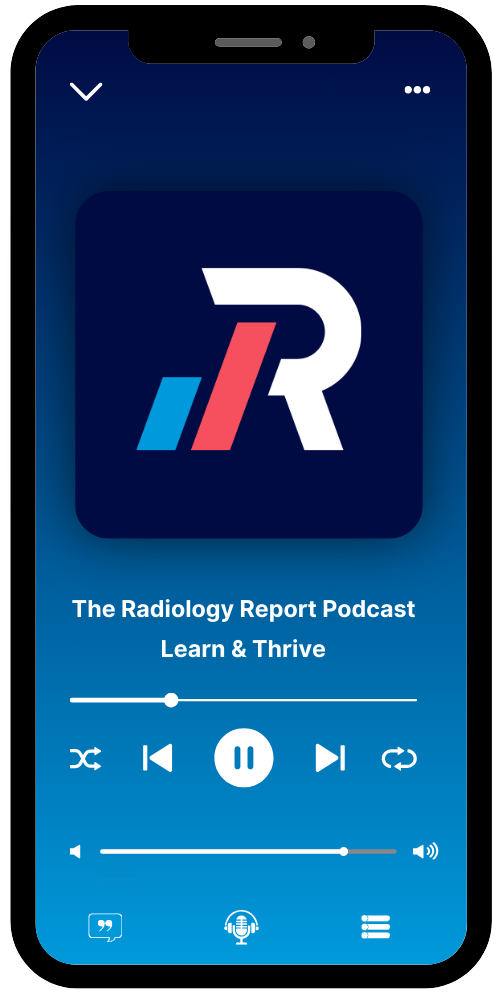The ups and downs in both the number of available radiology jobs and residency positions can make the prospect of navigating the job market seem more like a harrowing rollercoaster ride.
The dramatic swings in the radiology job market, shown in the illustration below, are unlike those seen in other specialties like general surgery and internal medicine [1].

Naturally, this can have a negative impact on medical student interest in radiology and on radiology resident morale.
But is such discouragement truly warranted?
In this post, we’ll examine the factors that contribute to radiology job market volatility and what it means for those seeking radiology residencies or fellowships.
“Supply and demand”
The radiology job market is cyclical in nature and, as with any market, influenced by the fluctuations of supply and demand.
Over the past 25 years, the imbalance between the number of available radiology positions (demand) and the number of those seeking residency positions or fellowships (supply) has led to periods of oversupply and undersupply and contributed to the volatility of the radiology job market [1].
The number of residency positions is influenced by the radiology job market, yet not always in a timely or predictable fashion.
What contributes to radiology job market volatility?
At a very broad level, the volatility of the radiology job market could perhaps be reduced to 3 major causes: technology advancements, economics, and politics. Although, of course, a combination of many elements contribute to a difficult job market.
Examples from recent history include sweeping governmental health care policy changes, decreased reimbursement, deferred retirements, increased productivity of radiologists, the enlargement of residency programs, and the economic (and political) environment in general.
How does it impact residency positions?
The number of residency positions also cycles up and down, but is only loosely tied to the radiology job market. From the time a medical student enters a radiology program, completes the five years of training followed by a year of fellowship, the radiology job market can change dramatically.
Radiology positions can be limited by 1) Medicare budget caps on graduate medical education funding and 2) the need for approval to increase residency slots from the Accreditation Council of Graduate Medical Education at the individual program level.
As a result, there is a time lag between changes in the job market and the response of programs to increase residency positions.
All being said, the data shows a more promising outlook. The years of 1995 and 1996 were outliers, when the number of residency positions increased dramatically, only to bottom out in 1997. There has been a gradual increase in the number of open residency positions almost every year from 2001 to 2019 [1-5].
U.S. Radiology Residency Positions (POS) Offered Per Year
| 1994 | 1995 | 1996 | 1997 | 1998 | 1999 | 2000 | 2001 | 2002 | 2003 | 2004 | |
| POS | 873 | 1026 | 1154 | 890 | 843 | 852 | 841 | 875 | 920 | 979 | 981 |
| 2005 | 2006 | 2007 | 2008 | 2009 | 2010 | 2011 | 2012 | 2013 | 2014 | 2015 | |
| POS | 1018 | 1011 | 1035 | 1085 | 1095 | 1090 | 1124 | 1111 | 1143 | 1176 | 1156 |
| 2016 | 2017 | 2018 | 2019 | ||
| POS | 1183 | 1215 | 1235 | 1268 |
The swelling number of residency positions does raise some crucial questions.
If the current trend remains unabated, will the job market be flooded with a surplus of “supply” or will the high demand for trainees continue?
The answer remains to be seen—but stay tuned. In the next posts, we’ll take a further look at the complexities of this topic, and explore what the future landscape may hold in store.
In the meantime, please consult your crystal ball and shoot me an email with your predictions!
References
- Sharafinski ME, Nussbaum D, Jha S. Supply/demand in radiology: a historical perspective and comparison to other labor markets. Acad Radiol 2016; 23:245-251
- National Resident Matching Program, Results and Data: 2016 Main Residency MatchⓇ. National Resident Matching Program, Washington, DC. 2016
- National Resident Matching Program, Results and Data: 2017 Main Residency MatchⓇ. National Resident Matching Program, Washington, DC. 2017
- National Resident Matching Program, Results and Data: 2018 Main Residency MatchⓇ. National Resident Matching Program, Washington, DC. 2018
- National Resident Matching Program, Results and Data: 2019 Main Residency MatchⓇ. National Resident Matching Program, Washington, DC. 2019




